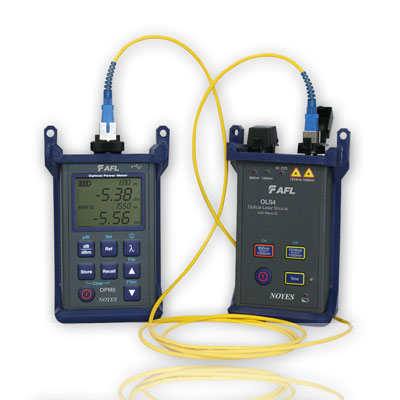High-quality ofda systems deliver precise fibre testing and consistent results.
High-quality ofda systems deliver precise fibre testing and consistent results.
Blog Article
Discover the Relevance of Optical Fiber Testing in Modern Telecommunications
In the world of modern telecommunications, the value of optical fiber testing can not be overstated, as it functions as the backbone for making certain network dependability and efficiency. By executing regular testing methods, drivers can preemptively determine prospective problems such as signal destruction, hence guarding versus disturbances that can prove costly. Advanced strategies like Optical Time-Domain Reflectometry play a crucial role in this process, yet lots of may forget the wider ramifications of these techniques. What are the details advantages that regular screening offers, and exactly how might it form the future landscape of telecommunications?

Understanding Optical Fiber Testing
Optical fiber testing is a vital process in telecoms that ensures the stability and efficiency of fibre optic networks. This testing includes a series of procedures made to review the physical and functional characteristics of optical fibres - ofda. Secret specifications evaluated include optical power loss, data transfer ability, and mistake location, which are important for preserving high-grade interaction links
The screening process commonly entails the usage of specific tools such as Optical Time-Domain Reflectometers (OTDR) and Optical Power Meters. OTDRs are utilized to identify and identify mistakes, entwines, and ports within the fibre, while power meters measure the transmitted light signal strength to establish efficiency.
Additionally, screening is carried out at numerous phases, including during setup, upkeep, and troubleshooting, to guarantee that the network meets industry requirements and operational requirements. Compliance with requirements set by companies like the International Telecommunication Union (ITU) and the Telecoms Market Organization (TIA) is extremely important.
Advantages of Regular Evaluating
Routine testing of optical fibres yields numerous benefits that significantly enhance network integrity and efficiency. One of the primary advantages is the early discovery of prospective problems, such as breaks or destruction in the fibre, which can cause pricey downtime if left unaddressed (optical fibre testing equipment). By recognizing these troubles proactively, telecommunications companies can reduce solution disruptions and make sure regular connection for their clients
Additionally, normal testing helps to preserve the integrity of signal high quality. As optical fibers age, their efficiency can be impacted by elements such as ecological problems and physical anxiety. Routine analyses permit for the monitoring of signal loss and general transmission effectiveness, making certain that the network runs at optimal levels.
An additional substantial advantage is compliance with sector standards. Regular testing sustains adherence to regulatory requirements, thereby mitigating lawful and monetary risks related to non-compliance. It enhances the total life-span of the fibre framework by helping with prompt upkeep and repair work.

Common Examining Approaches
Examining optical fibres utilizes different techniques to make certain the honesty and efficiency of telecommunications networks. Among the most common methods is Optical Time Domain Reflectometry (OTDR), which assesses the entire length of the fiber by sending a pulse of light and measuring the reflections triggered by imperfections or breaks. This method supplies in-depth information about the area and intensity of faults.
An additional prevalent approach is making use of Optical Power Meters, which measure the amount of light transmitted with the fibre. This strategy assists identify the loss of signal strength, guaranteeing that it fulfills industry standards. In Addition, Aesthetic Fault Locators (VFL) are employed to determine breaks or extreme bends in the fibre by predicting a noticeable laser light right into the wire.
Insertion loss screening is additionally critical, as it evaluates the loss of signal power arising from connections and mates within the network. The use of Polarization Mode Dispersion (PMD) screening examines the effect of fibre qualities on signal integrity.
Each of these techniques plays a crucial role in preserving the performance and integrity of optical fibre networks, eventually adding to smooth telecommunications procedures.
Effect on Network Performance
The stability and efficiency of optical fibre networks straight affect general network performance. In contemporary telecoms, the performance of information transmission depends greatly on the high quality of the optical fibres used. Any deterioration in the fiber's condition-- whether due to physical damages, contamination, or too much flexing-- can cause enhanced attenuation and signal loss, have a peek at this website considerably affecting data integrity and speed.
Routine optical fiber testing is important to recognize and remedy possible issues before they materialize as network failings or stagnations. Methods such as Optical Time Domain Reflectometry (OTDR) and insertion loss screening enable specialists to determine the efficiency of fiber web links precisely. These tests not just review the physical problem of the fibres yet also make certain compliance with sector standards, consequently safeguarding the network's integrity.
Furthermore, a well-kept optical fibre network adds to reduced functional prices and boosted customer contentment, as end-users experience less disruptions and greater data prices. Ultimately, the focus on rigorous optical fibre screening practices acts as a keystone for sustaining durable telecommunications facilities, making certain that company can fulfill the expanding needs for data transfer and connection in today's electronic pop over to this site age.
Future Patterns in Examining
As we look ahead, innovations in technology are poised to reshape optical fiber testing in telecoms. The increase of automation and artificial knowledge (AI) is anticipated to improve the efficiency and accuracy of screening processes. Automated testing systems can carry out detailed evaluations with minimal human treatment, considerably lowering the possibility for mistakes and expediting time-to-deployment.
Furthermore, the combination of artificial intelligence algorithms will certainly make it possible for predictive maintenance, allowing network carriers to predict possible problems prior to they rise right into failures. This proactive strategy not only enhances network dependability however also optimizes functional expenses.
An additional emerging trend is the development of mobile screening tools that supply real-time evaluation - ofda. These gadgets will encourage technicians to do on-site diagnostics rapidly, helping with quicker resolutions and enhancing service quality
The growth of 5G networks further necessitates the development of testing methodologies. As data transfer needs increase, standard screening strategies may no much longer are enough. Innovative solutions More Help such as optical time-domain reflectometry (OTDR) and advanced spectral evaluation will certainly end up being important in making sure the stability and performance of high-speed links.

Final Thought
To conclude, optical fiber screening is essential for making sure the stability and reliability of modern telecommunications networks. Routine screening methods not only help determine possible problems such as signal loss and mistakes but likewise contribute to boosted network efficiency and customer complete satisfaction. As the need for smooth connectivity continues to grow, the fostering of advanced testing approaches will certainly play a critical duty in maintaining top notch network criteria and sustaining the developing landscape of telecoms.
Report this page